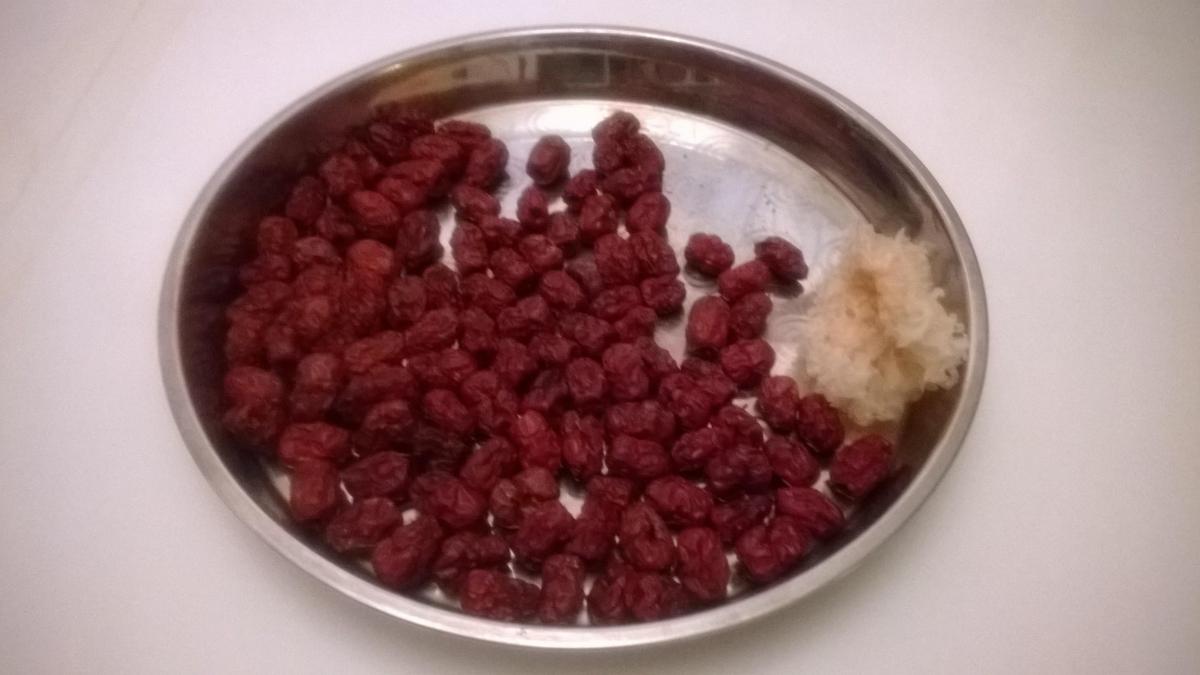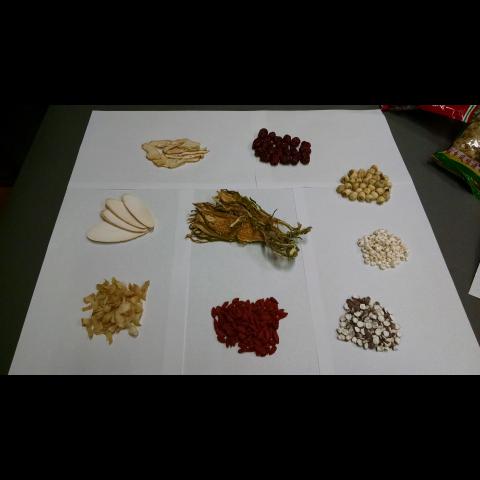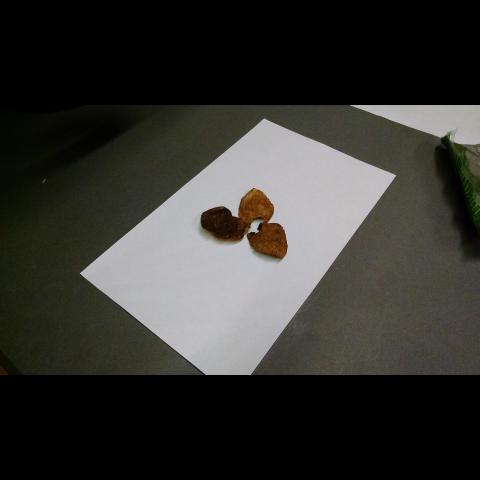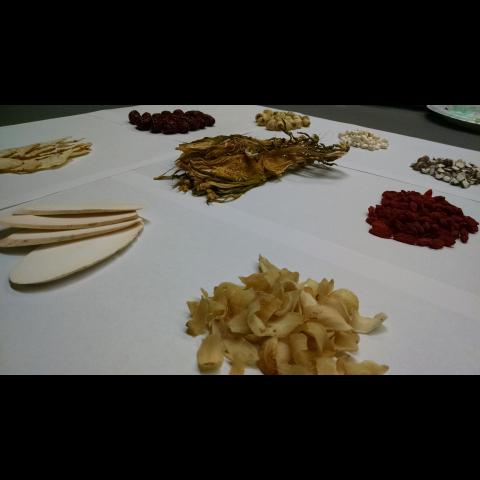Synopsis:
- Immigrated in 1997 to live with family in Chicago
- Immigration experience: Learning how diverse the communities are in Chicago, process of discovering different types of foods available in markets
- Diet and nutrition: Knowledge of herbs used in soups and teas, blending ingredients found in American markets into her cooking, eating a lot of vegetables, rice, and a little meat
An Introduction and Herbal Food Culture
Lingyi is from Guangzhou, Guangdong in China. For her, understanding wellness through food, Chinese herbs, and making soups are derived in large part from the food culture in China. She notes that she learned how to make different congee (rice porridge) and soups such as winter melon soup from her relatives as well as her friend who was a Chinese Traditional Medicine practitioner. However, she didn’t learn these recipes and herbal uses through any formal conversations.
Rather, the information was passed down through a network of family members when chatting during afternoon tea and dinner, and from friends.
“Why are you using winter melon in this soup?” “Well, winter melon is very good for balancing out hot qi. It is good to include in soups during hot summer.”
“There are a set of staple herbs you can use in herbal soups that are good for health...”
Curious, she read more about the different herbs through books and articles. Gradually, her knowledge of both the food culture and herbs developed. Even now, she says she hasn’t formally taught her daughters about how to make certain things, but they learned through the same process of observing others casually and learning snippets in dinner conversations.
Accessing Diverse Food Markets
Lingyi moved to Chicago in 1997 to live with her daughter. Living in America has shaped the way she goes about finding familiar foods as well as her insights about cooking foods, brewing herbal soups, and making herbal teas. Luckily, at the time, Lingyi lived near Uptown Chicago where there were a variety of Asian and South Asian supermarkets. Along with the markets in Chinatown, she was able to find most of the ingredients she used in China such as vegetables like bitter melon and gai lan (Chinese broccoli) and herbal ingredients like wolfberries and lily bulb. Over the years, she began to explore other neighborhoods in Chicago — at times, she even travels to north Indian shops in Devon Avenue to buy fruits and vegetables. For example, she buys karela, a bitter melon that originated from India, for soup.
Guangzhou Cuisine Styles
Lingyi says that Guangzhou culture emphasises soups which often include herbs in them. Even now, as she goes shopping for groceries, her shopping list includes ingredients for potential herbal soups to prepare. She says that her diet consists of mostly vegetables with a little meat. Following Traditional Chinese Medicine, she says that it’s important to maintain a balance of yin and yang (hot and cold qi) in what you eat as well as the herbs you use.
Common Chinese Medicinal Practices
Ginger is a very important staple item in many of her dishes. Ginger is considered to be ‘hot’ and can be used to balance out food items that having a cooling effect on the body. For steaming vegetables, it is important for her to put ginger in it to balance out the cooling attribute of the vegetable.
She describes how this balancing out process is unique for each person. If you have too much hot qi, you might have a bitter or dry sensation in your mouth or have a sore throat. If you have too much cool qi, you might have a bland taste in your mouth or a lack of appetite.
For sore throats which stem from having too much hot qi in the body, Lingyi likes to make herbal ‘cooling’ tea (涼茶 Liáng chá) using ingredients like chrysanthemum flower (菊花 Jú huā, scientific name: Chrysanthemum morifolium), honeysuckle (金银花 Jīn yín huā, scientific name: Lonicera), common bombax flower (木棉花 Mù mián huā, scientific name: Bombax ceiba), Redstem wormwood (茵陈 Yīn chén, scientific name: Artemisia scoparia), and prunella (夏枯草 Xià kū cǎo, scientific name: Prunella vulgaris).
The most common herbal soup Lingyi makes is “Bà wáng huā” (霸王花):
“I sun dry the herbs I buy…[dried] items..like red dates... sold in the packages are not dried all the way through...if it is a good day, I sun dry them so I can store them longer, and they won’t go bad.”
- Lingyi

Red dates (红枣 hóng zǎo, scientific name: Ziziphus jujuba) and white wood ear (雪耳 Xuě ěr, scientific name: Tremella fuciformis) ready for sun drying in Lingyi’s backyard.
Social Notion of Health and Wellness
Maintaining wellness is a cultural experience that is shaped by social ties in Lingyi's community. She emphasised that Chinese medicine is a very personal experience because what may be right for one person may not be right for another. At the same time, Chinese medicine is a very social experience because aspects of herbs and wellness come into play in everyday conversation in a very natural progression. It is a combination of learning from friends and family and gaining personal experience on what ingredients and quality works best. Lingyi's experience shows that knowledge is very fluid in terms of how individuals refine their understanding of Chinese medicine and herbal uses. This process is still in play as knowledge is shared between Lingyi’s, her daughters’, and her grandchildren’s generations.



